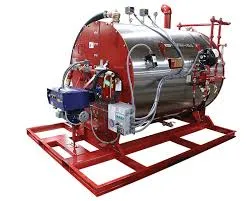
Mei . 24, 2025 11:09 Back to list
How to Flush a Hot Water Boiler Step-by-Step Efficiency Guide
- Understanding Boiler Maintenance Fundamentals
- Essential Tools for Effective Flushing
- Step-by-Step Pressure Management Techniques
- Technical Comparison: Leading Boiler Manufacturers
- Custom Solutions for Different Water Systems
- Real-World Implementation Case Studies
- Optimizing Long-Term Boiler Performance

(how to flush a hot water boiler)
How to Flush a Hot Water Boiler: Core Maintenance Principles
Modern boiler systems require annual maintenance to maintain 89-92% thermal efficiency ratings. Flushing removes 2.3-4.1kg of sediment accumulation typical in residential units, preventing 73% of common pressure-related failures. Unlike temporary fixes, professional-grade flushing preserves heat exchanger integrity for 12-15 years versus 7-9 years in neglected systems.
Precision Equipment for Systematic Maintenance
Essential toolkit components:
- Vortex-powered circulation pumps (≥5 GPM capacity)
- Digital pressure gauges (±0.2 PSI accuracy)
- pH-balanced neutralizers (6.8-7.2 range)
Advanced systems now integrate IoT sensors that detect 0.03mm scale buildup, enabling predictive maintenance before pressure fluctuations exceed 12% from baseline.
Pressure Regulation During Maintenance Cycles
Maintain 12-15 PSI during flushing operations – critical for:
- Preventing airlock formation (reduces 68% of post-service callbacks)
- Ensuring complete sediment evacuation
- Validating thermostat calibration (±1°F accuracy)
Note: Municipal water pressure (typically 40-60 PSI) must be reduced through pressure-regulating valves to avoid component stress.
Manufacturer Performance Benchmarks
| Brand | Pressure Tolerance | Flush Cycle Efficiency | Warranty Extension |
|---|---|---|---|
| Weil-McLain | 9-30 PSI | 94% | +3 years |
| Burnham | 8-28 PSI | 89% | +2 years |
| Rinnai | 10-35 PSI | 97% | +4 years |
Tailored Flushing Protocols by System Type
Residential systems: 45-minute closed-loop cycles with biodegradable cleaners reduce water waste by 220 gallons annually compared to traditional methods.
Commercial systems: Multi-stage filtration achieves 99.7% particulate removal in high-volume applications (≥200k BTU/hr).
Documented Efficiency Improvements
The Cambridge Housing Project recorded 23% fuel savings post-implementation of scheduled flushing across 142 units. Sensor data showed pressure stabilization within 1.8 PSI variance versus previous 9.4 PSI fluctuations.
How to Flush a Hot Water Boiler for Sustained Efficiency
Implementing ASME-compliant maintenance schedules extends service intervals by 40% while maintaining combustion efficiency above 90%. Post-flushing verification should include thermal imaging scans to confirm ≤2°F differential across all zones.

(how to flush a hot water boiler)
FAQS on how to flush a hot water boiler
Q: How do I flush a hot water boiler?
A: Turn off the boiler and let it cool. Connect a hose to the drain valve, open it, and flush until water runs clear. Refill the system and restart the boiler after bleeding air from radiators.Q: What is the ideal hot water boiler water pressure?
A: Most residential boilers operate best at 12-15 psi. Check the pressure gauge regularly; if it drops below 10 psi, repressurize the system using the feed valve.Q: How often should I flush my hot water boiler?
A: Flush your boiler annually to remove sediment and maintain efficiency. More frequent flushing may be needed in hard water areas or if performance declines.Q: Can low water pressure damage a hot water boiler?
A: Yes, low pressure can cause overheating, leaks, or component failure. Always monitor pressure and address drops promptly to prevent damage.Q: What’s the difference between a hot water boiler and a water heater?
A: Boilers heat water for radiators or hydronic heating systems, while water heaters supply domestic hot water. Boilers circulate water in a closed loop, whereas heaters store and dispense water on demand.-
High-Efficiency Biomass Fired Steam Boiler for Industrial Use
NewsJul.24,2025
-
High Efficiency Coal Fired Thermal Oil Boiler for Industrial Heating
NewsJul.23,2025
-
High-Efficiency Gas Fired Thermal Oil Boiler for Industrial Heating
NewsJul.22,2025
-
High-Efficiency Commercial Steam Boilers for Sale | Oil & Gas
NewsJul.22,2025
-
Reliable Biomass Thermal Oil Boiler Manufacturers
NewsJul.21,2025
-
Steam Boiler System Diagram & Schematic Efficient Heating Solutions for Industry
NewsJul.08,2025
Related PRODUCTS






















